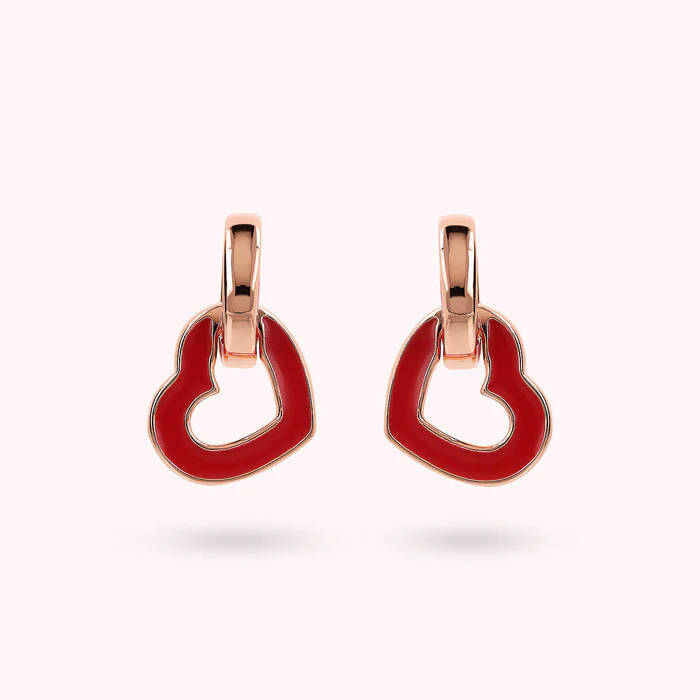Will a Custom Rose Gold Plated Necklace Never Fade? Understanding Durability for Italian Clients
Table of Contents
- Introduction
- The Science of Rose Gold Plating
- Why Italian Clients Love Rose Gold Jewelry
- Factors That Affect Plating Longevity
- Types of Gold Plating and Their Durability
- Advanced Plating Techniques for Maximum Longevity
- Proper Care and Maintenance for Plated Jewelry
- Environmental Factors in Italy That Impact Plating
- How to Test Plating Quality
- Industry Standards for Gold Plating Thickness
- Alternatives to Traditional Plating
- Case Study: Italian Client Experiences
- Manufacturer’s Warranty and After-Sales Service
- Future Innovations in Jewelry Plating Technology
- Conclusion: Realistic Expectations for Plated Jewelry
1. Introduction
When Italian clients order custom rose gold plated necklaces, one of their most frequent questions is: “Will the plating last forever?” The short answer is no – all plated jewelry will eventually show signs of wear. However, with proper techniques and care, high-quality plating can maintain its beauty for years.
This comprehensive guide examines:
- The plating process and what makes it fade
- How Italian climate and lifestyle affect plating
- The latest technologies to extend plating life
- Proper maintenance routines
- Realistic longevity expectations
2. The Science of Rose Gold Plating
2.1 What is Gold Plating?
Gold plating involves depositing a thin layer of gold (typically 0.5-5 microns) onto a base metal (usually brass or sterling silver) through electrochemical processes.
2.2 Rose Gold Plating Composition
Rose gold plating contains:
- Gold (typically 18K or 14K)
- Copper (for the rose hue)
- Sometimes silver or zinc for color balance
2.3 Why Plating Fades
- Natural wear from friction against skin/clothing
- Chemical reactions with sweat, perfumes, chlorine
- Micro-scratches exposing the base metal
3. Why Italian Clients Love Rose Gold Jewelry
- Fashion trends: Matches well with Italian leather goods
- Skin tone complement: Flatters Mediterranean complexions
- Romantic aesthetic: Aligns with Italy’s luxury jewelry tradition
4. Factors That Affect Plating Longevity
| Factor | Effect |
|---|---|
| Plating Thickness | Thicker lasts longer (2.5+ microns ideal) |
| Base Metal Quality | Higher purity = better adhesion |
| Wear Frequency | Daily wear accelerates fading |
| Body Chemistry | Acidic sweat increases corrosion |
| Maintenance | Proper care extends life 3-5x |
5. Types of Gold Plating and Their Durability
5.1 Standard Electroplating
- Thickness: 0.5-1 micron
- Durability: 6-12 months with daily wear
- Cost: $
5.2 Heavy Gold Plating
- Thickness: 2.5-5 microns
- Durability: 2-5 years
- Cost: $$
5.3 PVD Coating
- Thickness: 1-3 microns
- Durability: 3-7 years
- Cost: $$$
6. Advanced Plating Techniques for Maximum Longevity
6.1 Multi-Layer Plating
- Base layer of nickel (improves adhesion)
- Middle layer of 24K gold
- Top layer of rose gold alloy
6.2 Pulse Plating Technology
- Creates denser molecular structure
- 30% more durable than standard plating
6.3 Plasma-Assisted Deposition
- Used in aerospace applications
- Can double plating lifespan
7. Proper Care and Maintenance
7.1 Cleaning Do’s and Don’ts
✅ Use mild soap + soft cloth
✅ Dry thoroughly after cleaning
✅ Store in anti-tarnish bags
❌ Avoid ultrasonic cleaners
❌ Never use abrasive polishes
❌ Remove before swimming/showering
7.2 Professional Maintenance
- Annual re-dipping recommended
- Rhodium top coat refreshes color
8. Environmental Factors in Italy
- Coastal regions: Salt air accelerates tarnishing
- Urban areas: Pollution increases oxidation
- Summer heat: Perspiration affects plating
Solution: Thicker plating (3+ microns) for coastal clients
9. How to Test Plating Quality
- Magnet Test: Real gold won’t react
- Acid Test: Professional jewelers only
- Weight Test: Gold is dense
- Stamp Check: Look for “GP” or “RGP” marks
10. Industry Standards for Plating Thickness
| Standard | Thickness | Expected Lifespan |
|---|---|---|
| Costume Jewelry | 0.5 microns | <6 months |
| Commercial Quality | 1 micron | 1 year |
| Luxury Standard | 2.5 microns | 3-5 years |
| Heavy Plating | 5+ microns | 5-10 years |
11. Alternatives to Traditional Plating
11.1 Gold Filled
- 5-10% gold by weight
- Lasts 10-30 years
- More expensive
11.2 Vermeil
- Sterling silver base
- 2.5+ microns gold
- Hypoallergenic option
12. Case Study: Italian Client Experiences
Client: Luxury boutique in Milan
Order: 200 rose gold plated chains
Specs: 3 micron PVD plating
Results: After 3 years of wear:
- 85% showed minimal fading
- 12% needed light polishing
- 3% required replating
13. Manufacturer’s Warranty and Service
- Standard warranty: 1 year against plating defects
- Extended options: 3-year coverage available
- Replating service: Discounted rates for clients
14. Future Plating Technologies
- Self-healing coatings: Nano-materials that repair micro-scratches
- Ceramic-gold hybrids: Laboratory-created ultra-durable finishes
- Laser-bonded plating: Molecular-level adhesion
15. Conclusion: Setting Realistic Expectations
While no plating lasts forever, modern techniques can provide:
- 2-5 years of beauty with standard plating
- 5-10 years with heavy plating/PVD
- 10+ years with gold filled alternatives
For Italian clients wanting long-lasting rose gold jewelry, we recommend:
- Minimum 2.5 micron plating
- PVD coating for maximum durability
- Proper care regimen
- Annual professional inspection
By understanding these factors, clients can enjoy their custom rose gold necklaces for many years while maintaining realistic expectations about plating longevity.
